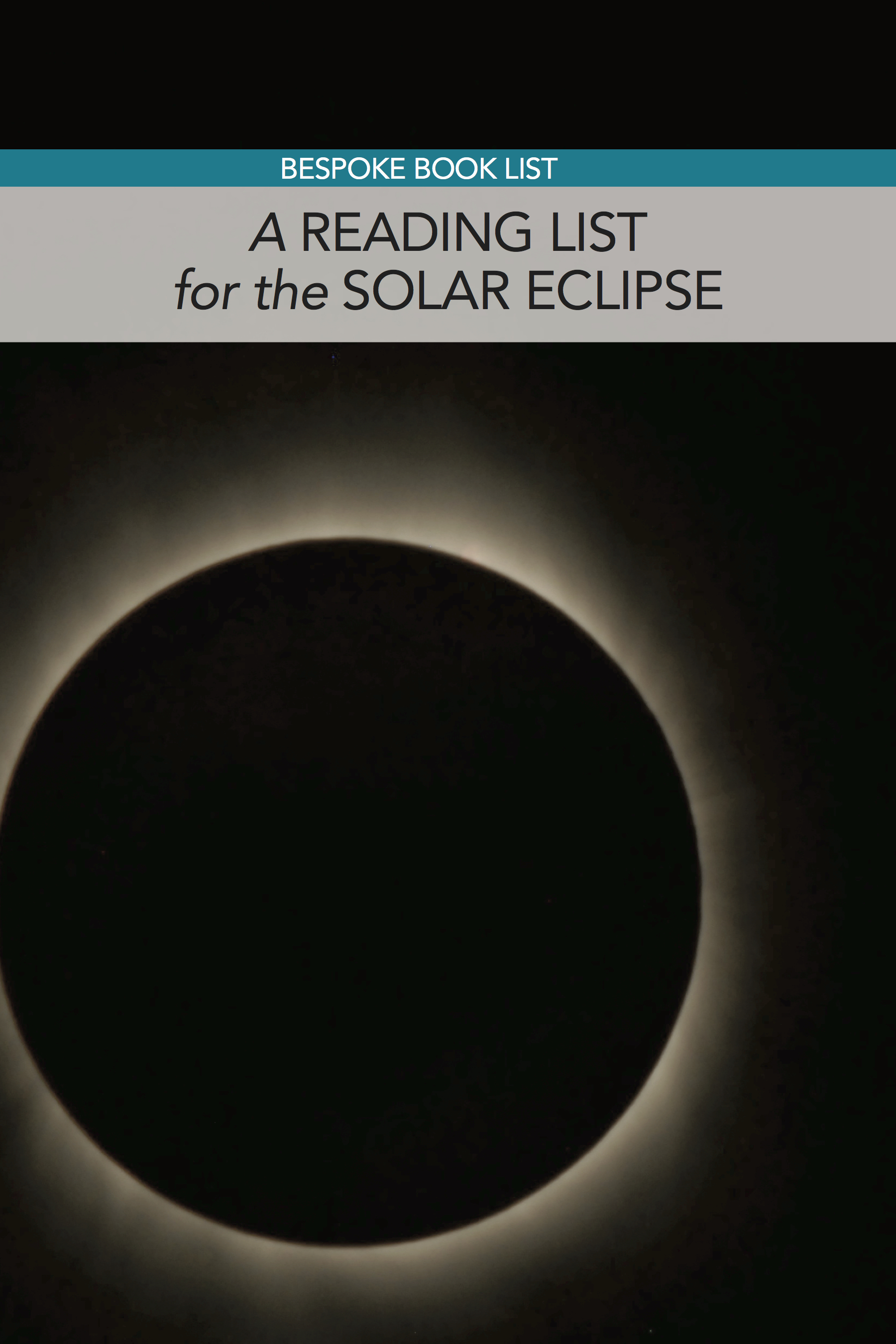Bespoke Book List: Books about the Solar Eclipse
We’re so excited about the solar eclipse this month! (We’ve even planned a family camping trip to coincide with it so that we can get the best possible view.) I’d love to add some eclipse books to our summer reading list. What do you recommend?
We’re all excited about the eclipse, too! There are a ton of books about the science and history of eclipses, so I’m going to focus the list on ones that we’ve read and enjoyed.
If you're looking for a one-stop-shop-style book focused specifically on the 2017 solar eclipse, check Totality: The Great American Eclipses of 2017 and 2024. It gives a rundown of the science behind the big event, but its focus is on experiencing the eclipse yourself: What should you know to view it safely? What can you expect to see, stage by stage? How can you take the best photographs of the eclipse? There’s tons of practical advice here, which is nice if you’re looking for a way to channel everyone’s eclipse excitement into actual planning. (Similarly, the editor of Astronomy magazine has put together Your Guide to the 2017 Total Solar Eclipse, which includes a mix of science and practical eclipse experiencing tips. If Totality has a wait list at your library, you could try this one instead.)
When the Sun Goes Dark is a quick, picture book read about preparing for a solar eclipse. (The idea of recreating a mini eclipse in your living room with a lamp, balls, and hoops might be fun to try in your tent, too.)
Another nice picture book is The Moon Book by Gail Gibbons—it’s about eclipses but also about the science and folklore of the moon in general, which is fun to dig into. (The sun shouldn’t get all the attention, right?)
We really loved American Eclipse: A Nation's Epic Race to Catch the Shadow of the Moon and Win the Glory of the World, which focuses not on the 2017 eclipse but on the 1878 one, which generated its own, pre-Facebook eclipse fever and marked an important moment in the history of astronomy. This book focuses on three famous eclipse chasers—the astronomer Maria Mitchell (who is one of my childhood heroes), Thomas Edison, and James Craig Watson—who worked to document the event and collect scientific data on the ground right in the middle of Wild West. It’s a great mix of history and science. (If you love this one, follow it up with America's First Great Eclipse: How Scientists, Tourists, and the Rocky Mountain Eclipse of 1878 Changed Astronomy Forever.)
Eclipse: History. Science. Awe. was actually written to coincide with the 1979 solar eclipse in the Pacific Northwest, but it has been updated with information for the 2017 eclipse, too. It’s a beautiful book with scientific details, history, and mythology about the eclipse—think of it as a coffee table book that delivers a glossy, fact-filled overview of eclipses without digging too deep into any particular topic. We loved flipping through this one, but I think it might be harder to pull off as a readaloud.
If you’d like to read more about the history of solar eclipses (and you should because it’s fascinating), pick up a copy of Sun Moon Earth: The History of Solar Eclipses from Omens of Doom to Einstein and Exoplanets. It’s a selective journey through eclipse history, starting with the first hints of scientific understanding in the world and continuing to modern-day eclipse chasers, and you’ll find a lot of cool facts you might not have known—such as the fact that the eclipse was used in 1919 to test Einstein’s theory of general relativity or that scientists today use eclipses to locate distant planets.
Anthony Aveni takes the history of eclipses one step further in In the Shadow of the Moon: The Science, Magic, and Mystery of Solar Eclipses, which considers the sociological and cultural history of eclipses as well as their scientific history. I love that it collects the stories of eclipses through history from oral, pictorial, and written traditions and accounts to create a story of cultural astronomy.
If you want to do a little bonus armchair eclipse chasing, physicist Frank Close writes about his travels and scientific discoveries on the trail of the next big eclipse in Eclipse: Journeys to the Dark Side of the Moon.
Younger readers will appreciate Looking Up! The Science of Stargazing, by Space.com columnist Joe Rao. It’s heavy on the solar eclipse (there's a whole section devoted to the 2017 eclipse) but also contains useful information about the constellations, northern lights, and other astronomical phenomena. (This one is especially handy if you want to do a little stargazing on your camping trip, too.)
If you are looking for activity suggestions to gear up for your eclipse viewing, Solar Science: Exploring Sunspots, Seasons, Eclipses and More breaks down the science behind the eclipse into a series of stand-alone topics, each with hands-on activities. It’s designed for middle school teachers to use in their classrooms, but most of the activities can be adapted pretty easily to suit students of any age. There’s also a lot of good general sun science here.
For a fun, pop culture approach to eclipses and their place in science and history, lunar scientist John Dvorak has written Mask of the Sun: The Science, History and Forgotten Lore of Eclipses. We really enjoyed reading about the superstitions and weird traditions associated with eclipses over the years. (For instance, did you know that pregnant women in Mexico wear safety pins on their underwear during an eclipse? Me neither!)
We’re always happy to help you put together a customized booklist. Email us with the details of what you’re looking for, and we’ll help you strategically raid your library shelves.













